Key takeaways
- Rock band fanpages create a sense of belonging among fans, serving as dynamic platforms for sharing memories, art, and discussions.
- Planning and consistency in content, such as updates and fan interactions, are vital for building a vibrant, engaged community.
- Engaging with fans through storytelling and personal experiences enhances the connection and enriches the tribute experience.
- Authenticity and open dialogue on fanpages foster a genuine, interactive community where members feel valued and heard.
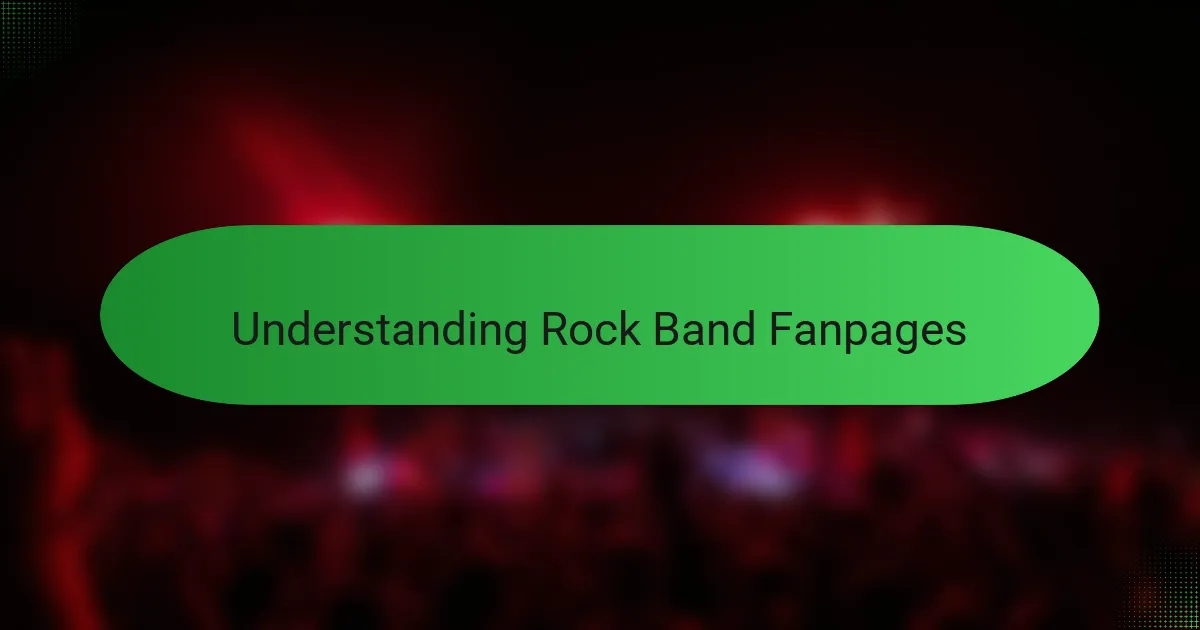
Understanding Rock Band Fanpages
Rock band fanpages are more than just websites; they’re digital meeting spots for people who share a deep passion. Have you ever noticed how scrolling through a fanpage feels like stepping into a room full of friends who get your love for music? That’s the magic behind these pages—they create a sense of belonging.
From my experience, fanpages become archives of memories—setlists, rare photos, and personal stories—that connect you to moments you never witnessed live. It’s almost like holding a piece of rock history in your hands, which makes me wonder: what makes these pages so addictive to explore?
They also serve as creative platforms where fans can express themselves, whether through art, covers, or tributes. I’ve found that engaging with other fans on these pages not only deepens your appreciation of the band but also sparks inspiration to keep the music alive in fresh ways.
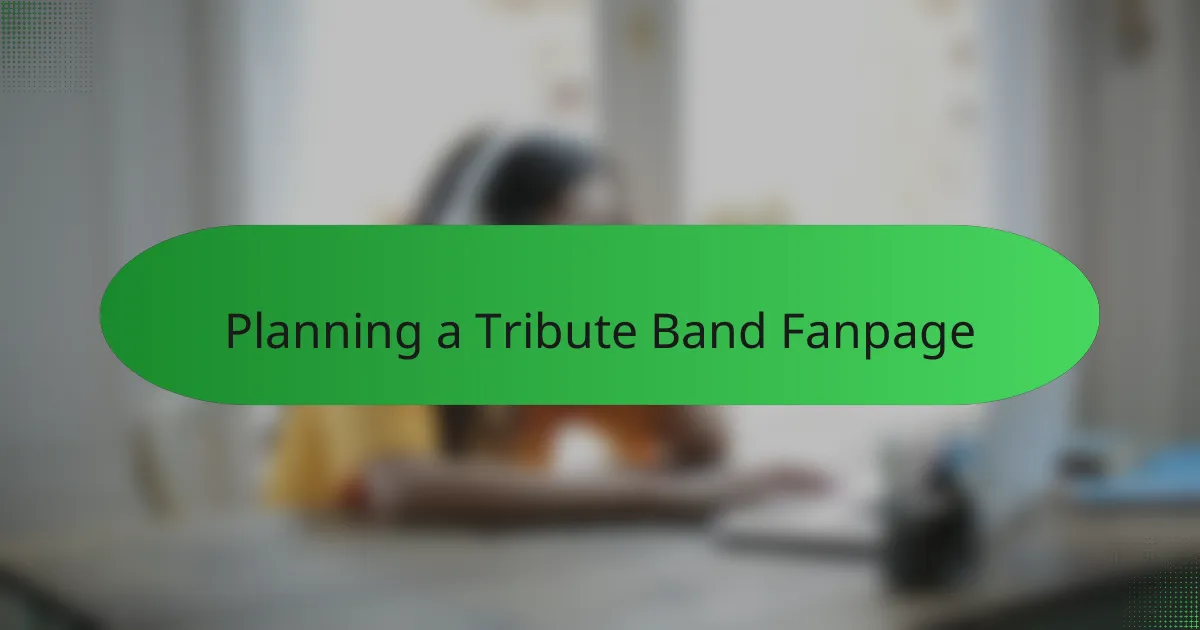
Planning a Tribute Band Fanpage
When I decided to create a Pink Floyd tribute band fanpage, the first thing I realized was how crucial planning is. You can’t just throw up some photos and hope for the best; you need a clear vision of what the page should offer. What kind of content would truly capture the essence of Pink Floyd’s music and legacy? That question guided me in shaping the page’s identity.
I found setting a content schedule helped keep things consistent—sharing gig updates, rare interviews, and fan art every week created a rhythm that fans started to anticipate. It’s amazing how a little structure can turn a fanpage from a random collection of posts into a vibrant community hub. Have you ever experienced that feeling when fans start contributing themselves? It’s pure magic.
Choosing the right platform was another piece of the puzzle. I wanted something user-friendly but flexible enough to handle multimedia content, from live performance videos to song analyses. In hindsight, investing time in this decision saved me countless headaches later, making the page comfortable for both me and the followers. What’s your take on balancing ease of use with creative freedom? It’s a dance I’m still perfecting.
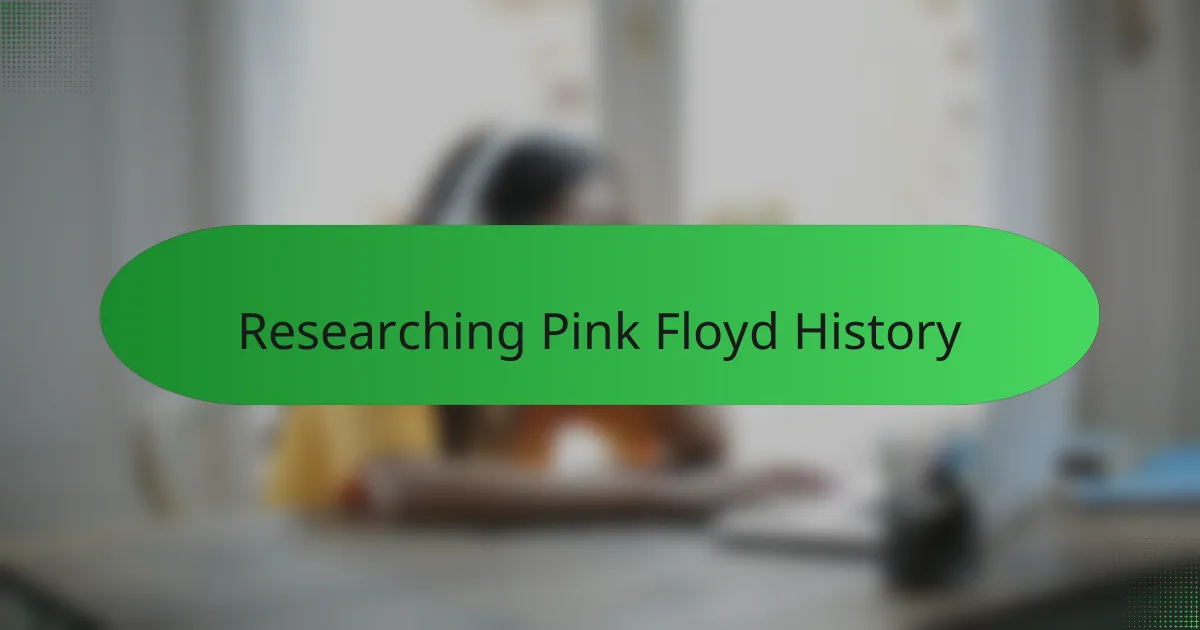
Researching Pink Floyd History
Diving into Pink Floyd’s history felt like peeling back layers of a complex, mesmerizing story. I was amazed at how each album reflected a different era, a different mood. Did you know that their early days were heavily influenced by psychedelic rock, only to later evolve into epic concept albums? Tracing that evolution helped me understand the band’s unique journey.
One thing I found incredibly insightful was discovering the personal struggles behind the music—like how Syd Barrett’s departure shaped their direction. It made me realize the power of resilience and reinvention in creativity. Have you ever thought about how much a band’s backstory colors the way you hear their songs? For me, this knowledge made the music feel more alive and profound.
Research wasn’t just about facts; it was about connecting with the spirit of Pink Floyd. Reading interviews, watching documentaries, and listening to deep cuts helped me catch nuances I had missed before. How often do we truly listen with context in mind? This process deepened not just my appreciation, but my commitment to honoring their legacy through the tribute.
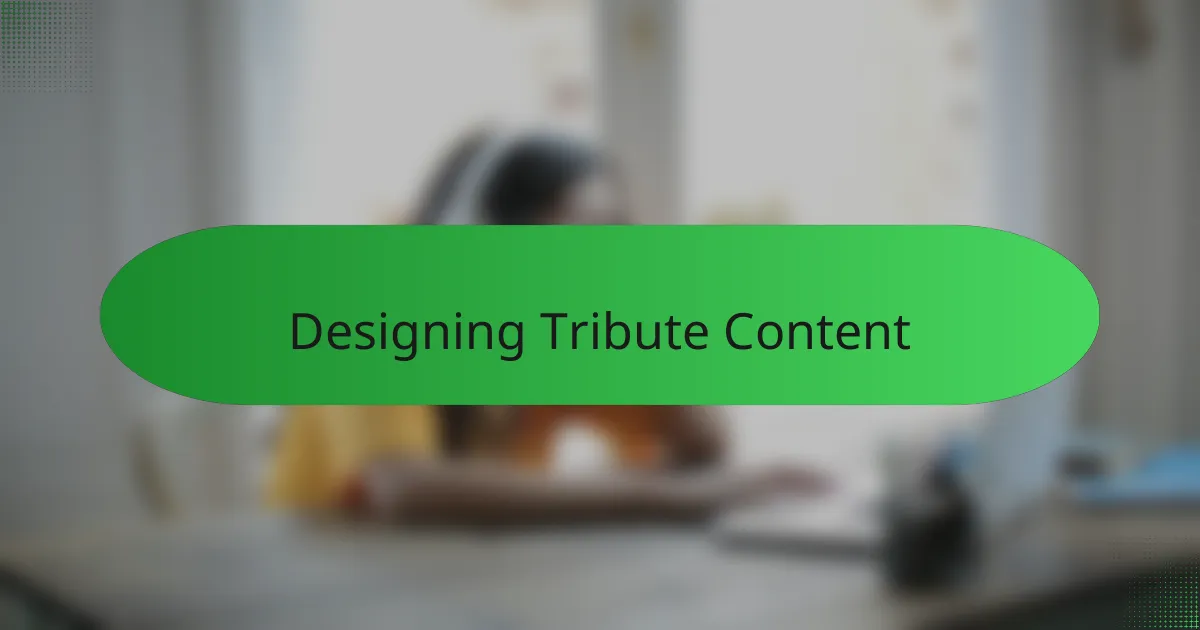
Designing Tribute Content
Designing tribute content was an exciting challenge that pushed me to think beyond just copying songs or images. How do you capture the essence of Pink Floyd’s atmosphere and emotion in digital form? For me, it meant focusing on storytelling through visuals and words that evoke the same feeling as their music—mysterious, deep, and thought-provoking.
I quickly learned that variety was key. Sharing everything from behind-the-scenes trivia to fan interpretations kept the content fresh and engaging. Have you ever noticed how adding personal reflections or lesser-known facts can transform a simple post into a memorable experience? It’s those details that made fans linger and interact more.
Creating content also became a way to honor the band’s artistry while connecting with other fans who shared my passion. I found that balancing respect for the source material with my personal touch sparked genuine conversations. Isn’t that what a tribute should do—celebrate and unite at the same time? This approach made designing the content feel rewarding and deeply personal.
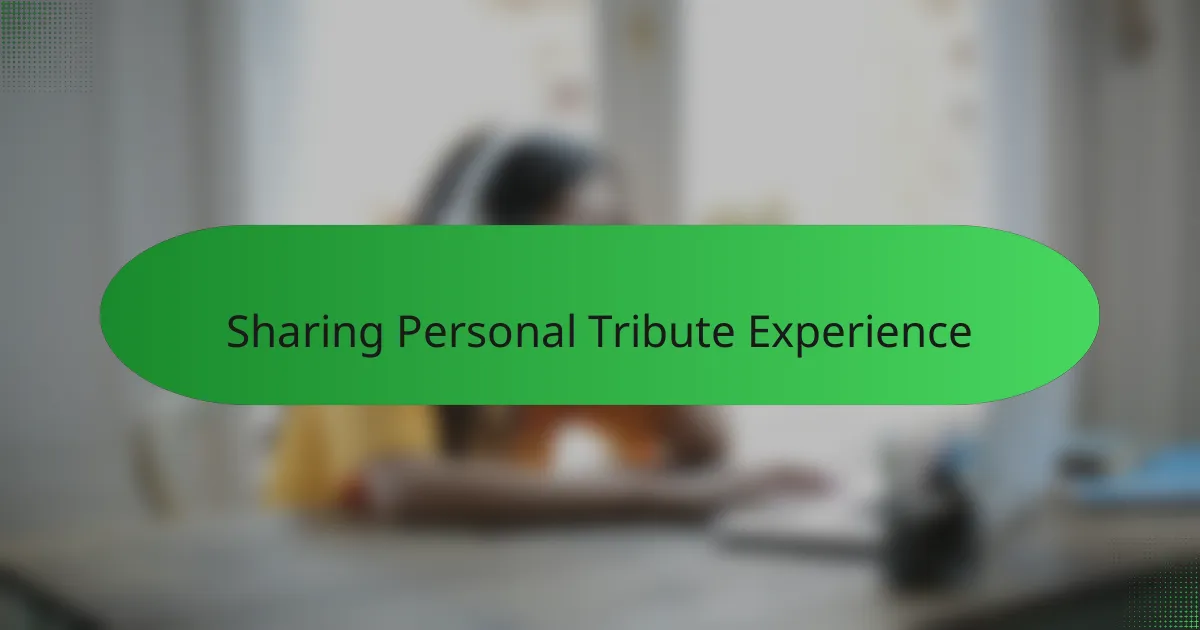
Sharing Personal Tribute Experience
One of the most rewarding moments in creating the Pink Floyd tribute was sharing my own experiences and memories tied to their music. Have you ever felt that surge of emotion when a song brings back a vivid moment? I found that opening up about those feelings invited others to do the same, turning the tribute into a shared journey rather than just a solo project.
I remember posting about my first time hearing “Comfortably Numb” live through a bootleg recording, and suddenly, fans from around the world chimed in with their versions of that same experience. It was like invisible threads connecting all of us through music, and it made me realize the power of storytelling in a tribute.
Sharing these personal moments wasn’t just about nostalgia; it became a way to breathe life back into the songs and keep the spirit of Pink Floyd alive. Have you ever wondered how your own stories could add new meaning to something already legendary? For me, these exchanges transformed the tribute into something much bigger and more heartfelt than I ever expected.
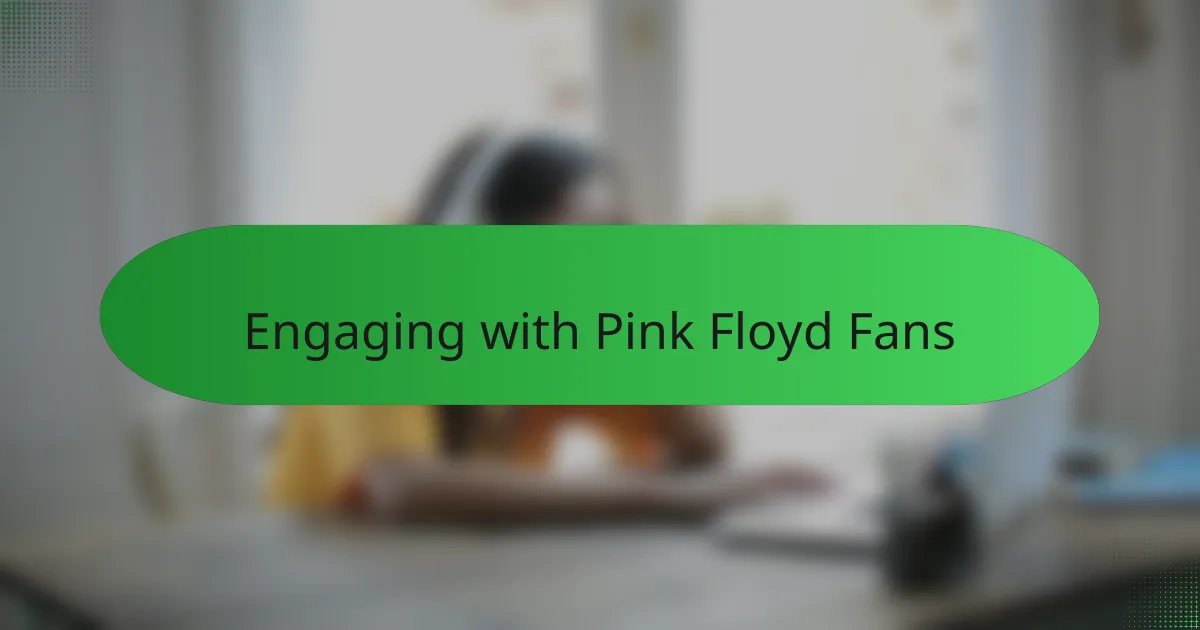
Engaging with Pink Floyd Fans
Connecting with Pink Floyd fans online quickly taught me that genuine interaction makes all the difference. I’d ask questions about favorite albums or lyric interpretations and watch conversations blossom—there’s something special about hearing how others experience the same music so differently. Have you ever noticed how a simple comment can spark a flood of memories and insights? That’s the beauty of sharing with fellow fans.
I also found that hosting live chats or Q&A sessions created a dynamic space where fans felt heard and valued. One evening, a fan asked about the meaning behind “Time,” and the discussion went deep into how we all wrestle with the passage of life. Those moments reminded me that Pink Floyd’s music isn’t just art—it’s a bridge connecting personal stories and emotions across the world.
But it’s not just about structured events—sometimes the best engagement happens in casual threads where fans share rare bootlegs or photos from obscure gigs. I stumbled upon a fan’s homemade poster that perfectly captured the spirit of “The Wall,” and sharing that sparked hours of enthusiastic debate. Isn’t it amazing how these small exchanges build a tight-knit, passionate community? That’s what makes being part of a tribute so fulfilling.
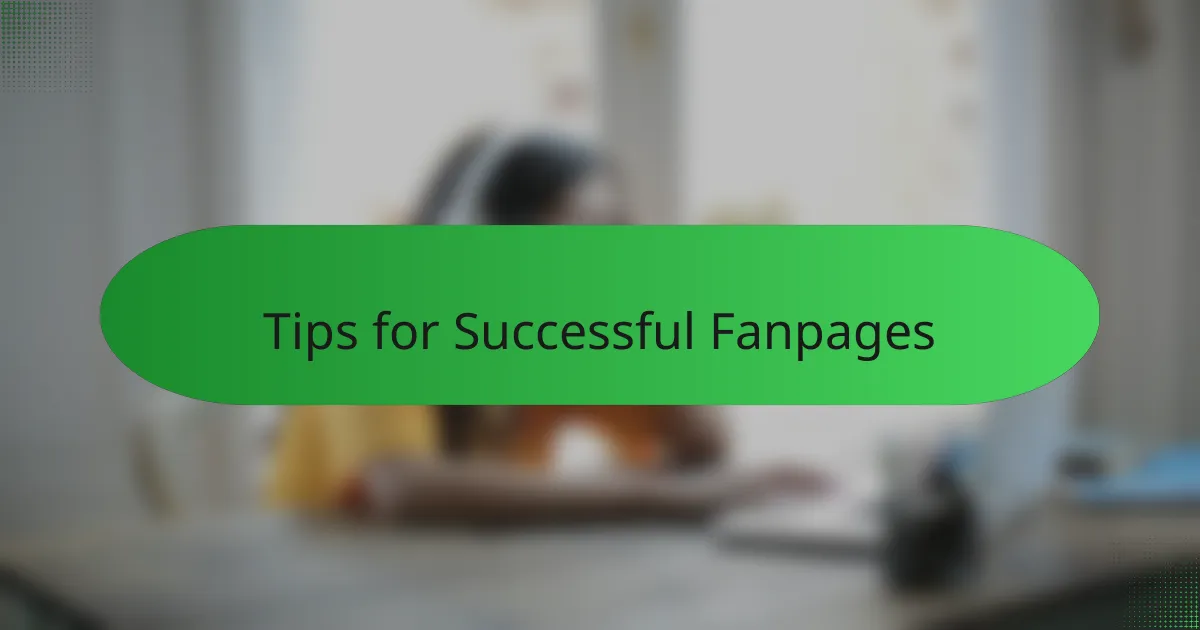
Tips for Successful Fanpages
One tip I can’t stress enough is to keep your fanpage authentic. When I first started mine, I made a point to share not just facts, but my own experiences and feelings about Pink Floyd’s music. Have you noticed how that personal touch invites others to open up too? It turns a simple fanpage into a genuine community.
Consistency also proved to be a game-changer. Posting regularly—even if it’s just a small update or a thoughtful reflection—kept the page alive and gave fans something to look forward to. I remember weeks when sharing a rare interview sparked unexpected conversations that lasted for days. Isn’t it surprising how a steady flow of content can create such momentum?
Lastly, don’t underestimate the power of engagement. Asking questions, responding to comments, and encouraging fans to share their own stories made the page feel like a two-way conversation rather than a broadcast. I once posed a simple question about favorite Floyd solos and was amazed at the variety and passion that poured in. Have you tried sparking dialogue like that on your page? It’s these connections that truly make fanpages successful.